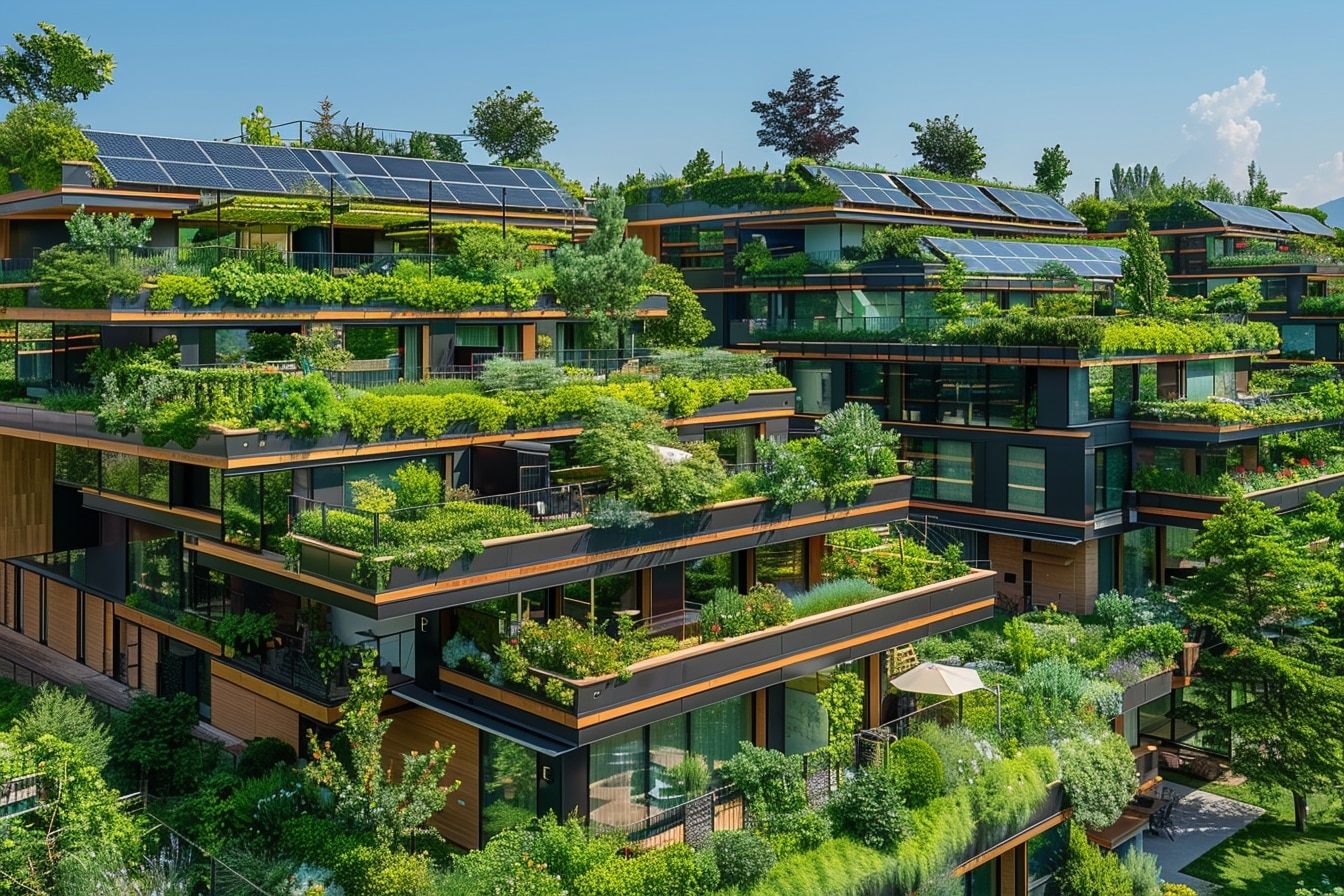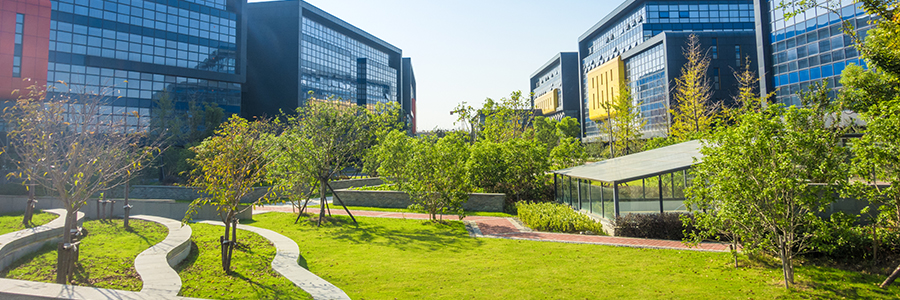Sustainable Urban Development: Green Infrastructure and Eco-Cities
Imagine walking through a city where the air is fresh, the streets are lined with lush greenery, and the buildings themselves seem to be part of nature. The hum of traffic is softened by the rustling of leaves, and the skyline is a harmonious blend of modern architecture and eco-friendly design. This isn't a scene from a utopian novel—it's the vision of sustainable urban development, where green infrastructure and eco-cities are paving the way for a healthier, more resilient future.
In a world where urbanization is rapidly expanding, the need for sustainable cities has never been more pressing. As more people flock to urban areas, the strain on natural resources, infrastructure, and the environment intensifies. Enter sustainable urban development—a holistic approach that aims to balance growth with environmental stewardship. At the heart of this movement are green infrastructure and eco-cities, innovative concepts that are transforming how we build and live in urban spaces.
What is Sustainable Urban Development?
Sustainable urban development is about creating cities that meet the needs of the present without compromising the ability of future generations to meet their own needs. It integrates economic, social, and environmental considerations into urban planning and development. The goal is to create urban environments that are not only efficient and productive but also equitable, inclusive, and environmentally responsible.
This approach to urban development is rooted in the principles of sustainability, which emphasize the interconnectedness of human and natural systems. It recognizes that cities are complex ecosystems that must be carefully managed to ensure long-term viability. Sustainable urban development encompasses various strategies, from reducing carbon emissions and conserving energy to promoting social equity and enhancing quality of life.
The Role of Green Infrastructure
Green infrastructure is a key component of sustainable urban development. It refers to the network of natural and semi-natural spaces within urban areas that provide ecological, economic, and social benefits. Unlike traditional infrastructure, which often involves concrete, steel, and asphalt, green infrastructure leverages the natural environment to address urban challenges.
Key Elements of Green Infrastructure:
1. Urban Green Spaces:
Parks, gardens, and green rooftops are examples of urban green spaces that enhance biodiversity, improve air quality, and provide recreational areas for residents.
2. Water Management Systems:
Green infrastructure includes features like rain gardens, permeable pavements, and green roofs that manage stormwater, reduce flooding, and improve water quality.
3. Urban Forests:
Trees and forests within cities play a crucial role in cooling urban areas, sequestering carbon, and enhancing the aesthetic appeal of urban spaces.
4. Green Buildings:
Incorporating green roofs, walls, and sustainable materials into building designs helps reduce energy consumption and create healthier indoor environments.
5. Sustainable Transportation:
Green infrastructure supports sustainable transportation options like bike lanes, pedestrian pathways, and public transit systems that reduce reliance on cars and lower greenhouse gas emissions.
Benefits of Green Infrastructure:
1. Environmental Benefits:
Green infrastructure helps mitigate the urban heat island effect, reduces air pollution, and enhances biodiversity. It also plays a crucial role in climate change adaptation by managing stormwater and reducing flood risks.
2. Economic Benefits:
Green infrastructure can save cities money by reducing the need for expensive grey infrastructure (e.g., sewers and drainage systems). It also enhances property values and attracts businesses and tourists.
3. Social Benefits:
Green spaces improve mental and physical health, provide recreational opportunities, and foster social cohesion. They also enhance the overall quality of life in urban areas.
Real-Life Examples:
New York City's High Line: This elevated park, built on a former railway line, is a prime example of green infrastructure. It provides a green space for residents and visitors, improves air quality, and has revitalized the surrounding neighbourhood.
Copenhagen's Green Cycle Routes: Copenhagen is known for its extensive network of bike lanes integrated with green spaces and parks. These routes promote sustainable transportation, reduce traffic congestion, and enhance the city's livability.
The Concept of Eco-Cities
Eco-cities take the principles of sustainable urban development to the next level. An eco-city is designed to minimize its environmental impact while maximizing the well-being of its residents. These cities are built around the concept of living in harmony with nature, using resources efficiently, and reducing waste.
Key Features of Eco-Cities:
1. Renewable Energy:
Eco-cities prioritize the use of renewable energy sources like solar, wind, and geothermal to reduce reliance on fossil fuels and lower carbon emissions.
2. Sustainable Architecture:
Buildings in eco-cities are designed with sustainability in mind, incorporating energy-efficient designs, sustainable materials, and green technologies.
3. Efficient Waste Management:
Eco-cities implement strategies for reducing, reusing, and recycling waste. They often feature advanced waste treatment facilities that convert waste into energy or compost.
4. Integrated Public Transport:
Public transport systems in eco-cities are efficient, accessible, and powered by clean energy. These systems are designed to reduce car dependency and encourage walking, cycling, and the use of public transit.
5. Community Engagement:
Eco-cities emphasize the importance of community involvement in sustainability efforts. Residents are encouraged to participate in initiatives like urban gardening, recycling programs, and energy conservation.
Challenges and Solutions:
Building eco-cities comes with its own set of challenges. High initial costs, the need for political will, and resistance to change can all pose obstacles. However, many cities around the world are finding innovative solutions to these challenges.
For example, Masdar City in Abu Dhabi is an ambitious project that aims to be the world's first zero-carbon, zero-waste city. While it has faced delays and challenges, it has made significant strides in renewable energy, sustainable architecture, and urban design.
Hammarby Sjöstad in Stockholm is another example of an eco-city that has successfully integrated sustainable practices into urban development. This former industrial area has been transformed into a vibrant, eco-friendly neighbourhood with energy-efficient buildings, renewable energy systems, and sustainable waste management practices.
Eco-City Frameworks and Indicators:
Eco-cities are often evaluated using specific frameworks and indicators that measure their sustainability performance. These frameworks typically assess factors such as energy efficiency, water use, waste management, transportation, and quality of life. One well-known framework is the Global EcoCity Framework (GEF), which provides guidelines for designing and assessing eco-cities based on principles of sustainability, equity, and resilience.
Anecdotes and Personal Insights:
Imagine living in a city where your morning routine involves walking through a park to catch a solar-powered tram, or where your apartment building is covered in greenery that not only cools the building but also provides habitat for birds and insects. This is the everyday reality for residents of cities like Freiburg, Germany, where sustainable urban development isn't just a goal—it's a way of life.
In Freiburg's Vauban district, for example, car-free streets, energy-efficient homes, and community gardens create a vibrant, sustainable community. Residents actively participate in the district's sustainability initiatives, from managing shared gardens to using car-sharing services. It's a testament to the power of community engagement in driving sustainable urban development.
The Relevance of Sustainable Urban Development Today
The relevance of sustainable urban development cannot be overstated. As the global population continues to urbanize, the pressure on cities to accommodate more people while minimizing environmental impact is intensifying. Climate change, resource depletion, and social inequality are some of the most pressing challenges that cities face today.
Sustainable urban development offers a path forward—a way to build cities that are resilient to climate change, resource-efficient, and socially inclusive. Green infrastructure and eco-cities are at the forefront of this movement, offering innovative solutions that can be replicated and scaled around the world.
Moreover, the COVID-19 pandemic has highlighted the importance of resilient, sustainable cities. The pandemic has underscored the need for green spaces, efficient public transport, and sustainable housing—elements that are integral to green infrastructure and eco-cities.
The Role of Policy and Planning:
For sustainable urban development to succeed, it requires strong policy frameworks and strategic planning. Governments, urban planners, and developers must work together to create policies that promote sustainability, incentivize green infrastructure, and support the development of eco-cities.
For instance, cities like Portland, Oregon, and Vancouver, Canada, have implemented comprehensive sustainability plans that integrate green infrastructure, renewable energy, and sustainable transportation. These plans serve as models for other cities looking to adopt sustainable practices.
Global Initiatives and Collaborations:
Sustainable urban development is also being driven by global initiatives and collaborations. The United Nations Sustainable Development Goals (SDGs), particularly Goal 11 (Sustainable Cities and Communities), provide a framework for cities to work towards sustainability. Organizations like the C40 Cities Climate Leadership Group and the Global Covenant of Mayors for Climate & Energy are also fostering collaboration among cities to address climate change and promote sustainable urban development.
Conclusion
Sustainable urban development is not just an aspiration—it's a necessity for the future of our cities and our planet. Green infrastructure and eco-cities are at the heart of this movement, offering innovative solutions to the challenges of urbanization, climate change, and resource depletion.
As we've explored in this post, sustainable urban development is about more than just reducing carbon emissions or conserving energy. It's about creating cities that are livable, resilient, and inclusive—cities where people can thrive in harmony with nature. Whether it's through green spaces that cool our cities, buildings that generate their own energy, or transportation systems that minimize pollution and promote public health, the elements of sustainable urban development are diverse and interconnected. These solutions not only address environmental concerns but also enhance the quality of life for urban residents by providing cleaner air, better health outcomes, and more equitable access to resources. As we move forward, it's crucial to integrate sustainability into every aspect of urban planning and design, ensuring that our cities can adapt to and mitigate the impacts of climate change while fostering a vibrant and inclusive community for all.







Comments
Post a Comment